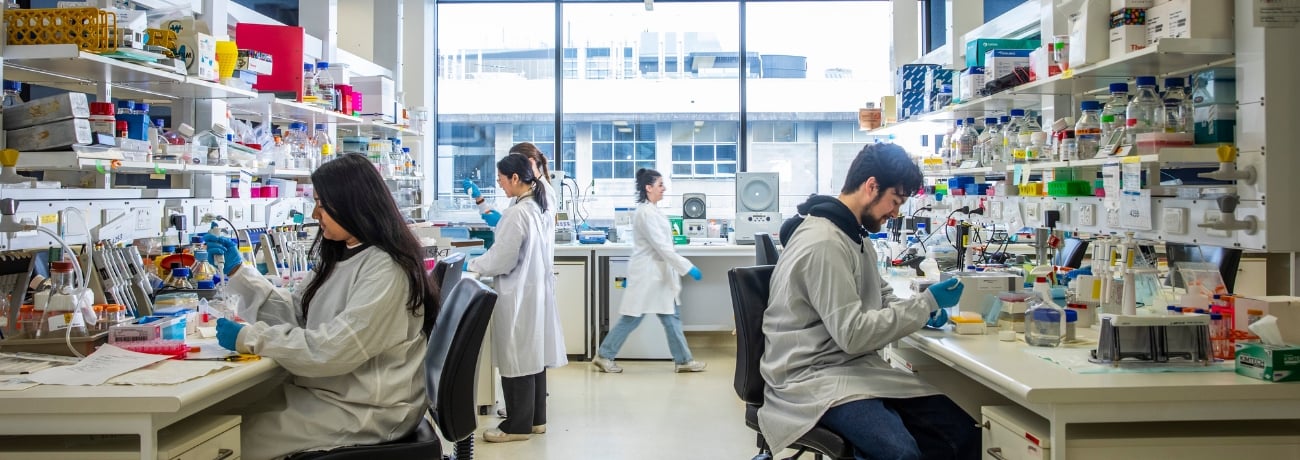Dr Emma Burrows
BBSc (Hons) PhD
Group Head
Location
Parkville Campus
30 Royal Parade
Parkville Victoria 3052
Research group
Translational Behaviour Group

Biography
Dr Emma Burrows leads a team aiming to understand how genetic mutations found in complex brain conditions such as Autism Spectrum Disorder (ASD) and dementia can lead to altered brain connectivity and behaviour across the lifespan.
Emma and her team use a touchscreen behavioural analysis that allows them to get an impressive readout of how mice solve problems, remember and pay attention. When mice perform the task correctly, they receive a milkshake reward. These tasks are similar to the ones used by neuropsychologists to assess people. Her team’s work aims to bridge the translational divide between how we measure brain disorders in animals and in the clinic.
Her work has attracted significant funding and several awards, including a Victorian Fellowship (Veski, Victorian State Government) to train with pioneers with touchscreen rodent cognitive testing in Cambridge UK. She is an internationally recognised expert in touchscreen testing, has published work on behavioural phenotyping of mice modelling a range of brain disorders (including Autism Spectrum Disorder, Schizophrenia and Dementia), was invited to speak about her work to a wide range of audiences and has supervised over 10 graduate students and mentors many early career researchers.
Dr Burrows believes that researchers from different disciplines will find innovative solutions to complex problems in science. Embodying this, she has recently led a team of neuroscientists, software engineers and psychologists in successfully reverse translating a task from the clinic to assess attention in mice. This major advancement now makes it possible to investigate attention-orienting deficits in mice using a task directly translatable to human clinical studies. An important innovation of our work is to train the mice to voluntarily head-fix at the centre of the touchscreen until the presentation of the target after a cue, which is critical to allow mice to process the cues before responding to targets. This voluntary head-fixing behaviour helps to control the starting position of the mice in each trial to obtain accurate measurements of whole-body response times. Response times are the main clinical outcome measurement for assessment of attention and cognitive domains, and the ability to measure this in mice is critical for translation.
Career highlights
Current roles
- Board director of Women in STEMM Australia
- Co-founding member of Women in Science Parkville Precinct
Past roles
- Chair of The Florey Equality in Science Committee
Other highlights
- Emma champions change in the research sector by implementing wide-reaching strategies that increase diversity and inclusion.
- Emma tweets all things science @embws.
Research projects
- New technologies for measuring brain changes over time in Parkinson’s disease
- How does a mutation linked to autism spectrum disorder lead to changes in brain connectivity?
- How does oxytocin change social behaviour in a mouse model of autism spectrum disorder?
- How can studying singing mice help understand language disorders?
- Genetic and pharmacological modulators of attention in autism spectrum disorder
